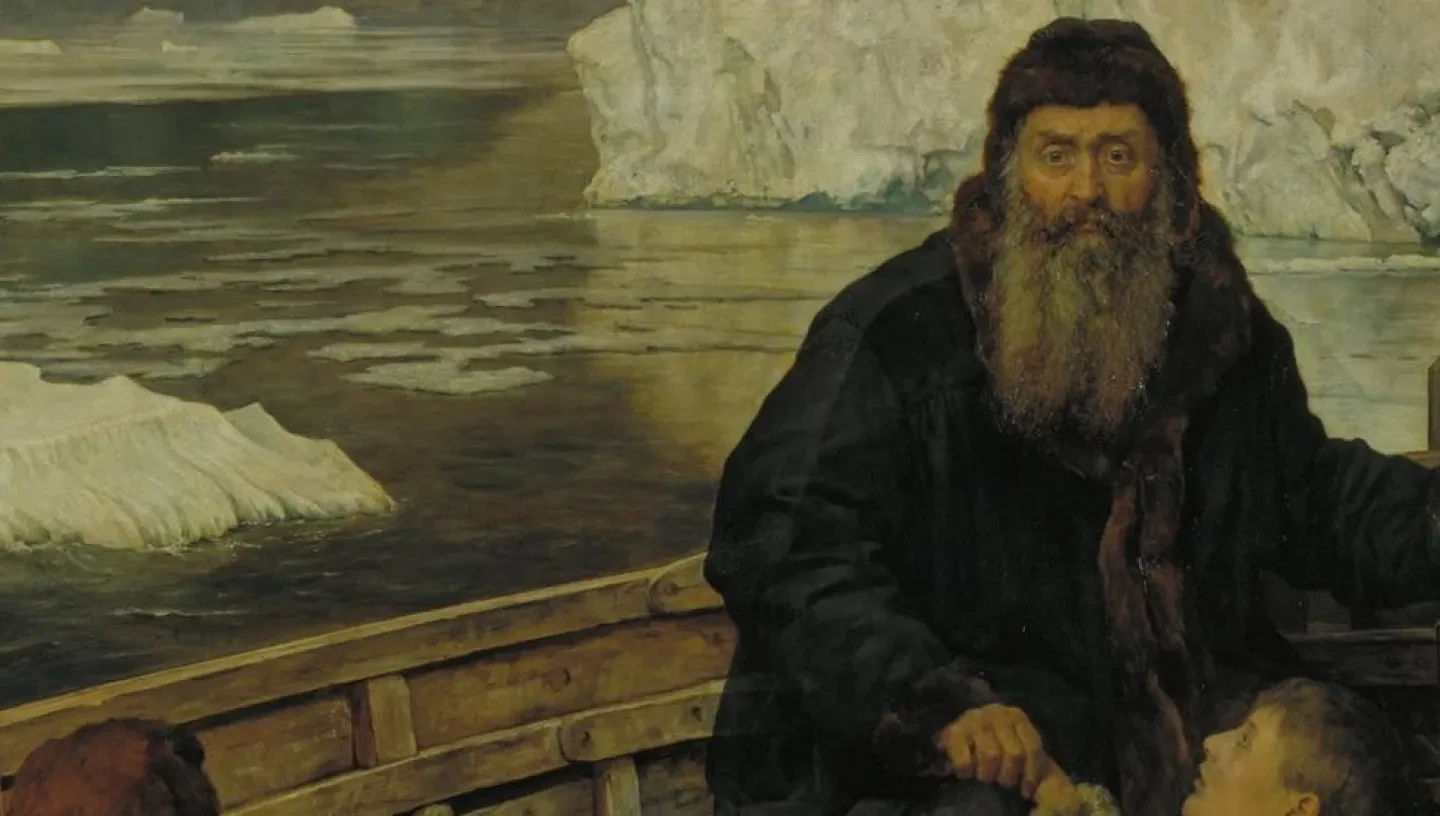
Henry Hudson North-West Passage expedition 1610–11
Henry Hudson was a well-known English explorer and navigator in the 17th century. He was the third explorer to search for the North-West Passage.
The North-West Passage was a fabled seaway linking the Atlantic and Pacific Oceans via the Arctic Circle and a sought-after trade route. The Virginia Company and the British East India Company, both keen to capitalise on the potential trade route, funded Hudson's expedition. It was to be his last ever voyage.
Hudson Strait and Hudson Bay
Hudson set sail in his ship Discovery in May 1610 and was swept by tides into what is now known as Hudson Strait, at the northern tip of Labrador, Canada. Pushing westwards, through ice-choked water, the Discovery reached the end of the strait six weeks later. Hudson then spent time mapping and exploring the area. In his journal he describes passing a narrow channel between two capes, which he named Cape Wolstenholme and Cape Digges, on what is now known as Digges Islands, both named after financiers of the voyage. From there he found ‘a sea to the westward’, today known as Hudson Bay.
Mutiny
Hudson then pushed south, reaching James Bay by 1 November 1610. Ten days later, the Discovery was frozen in and the crew became the first Europeans to spend winter in the Canadian Arctic. When the ice began to break up in the spring of 1611 the crew wanted to return home after a long, cold winter, but Hudson was resolved to continue with his quest, hoping he might find a westerly exit from the bay. The result was mutiny. On 23 June 1611, Henry Hudson, along with his son and some loyal crew members, were cut adrift in a shallop (a small boat for use in shallow water) and were never seen again.
The Discovery took the long journey home, losing many of the remaining crew on the way. The navigator was Robert Bylot, who would return in search of the North-West Passage several times, notably as captain of the Discovery accompanied by William Baffin in 1615.